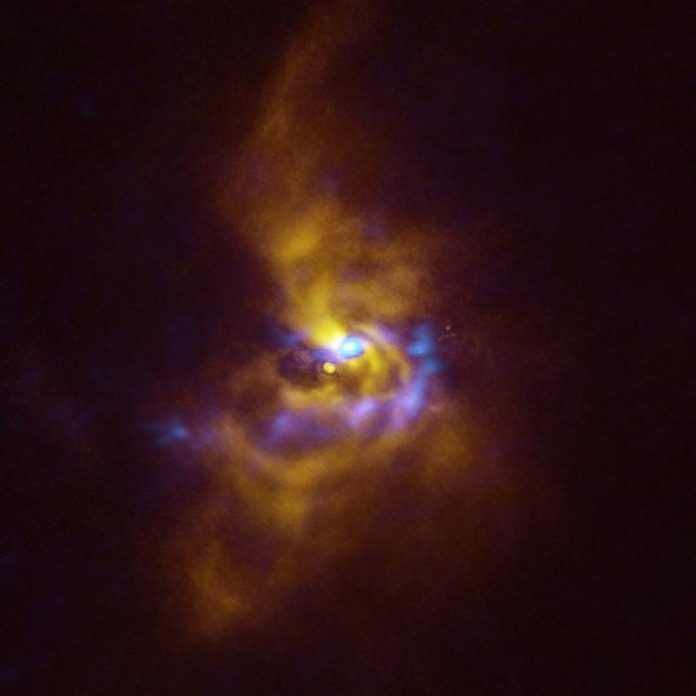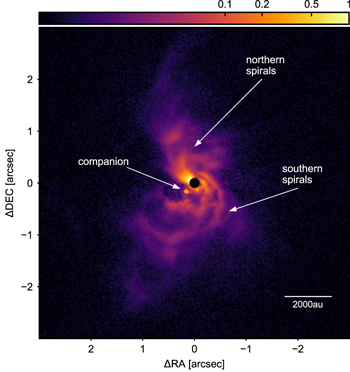
European Southern Observatory’s groundbreaking image shows dusty clumps around a young star that may pave the way for Jupiter-sized planet formation
A stunning new image revealed by the European Southern Observatory sheds light on the formation of giant planets, like Jupiter, around young stars.
Captivating discovery of secrets of planet formation
Researchers have used the Very Large Telescope (VLT) and the Atacama Large Millimeter/submillimeter Array (ALMA) to identify large dusty clumps near a young star, which could potentially collapse and lead to planet formation.
This is an important discovery, considering that in the past, astronomers have found that some stars can form planets, even near death.
SPHERE and ALMA unite to reveal fascinating details
The mesmerising picture was obtained using the Spectro-Polarimetric High-contrast Exoplanet REsearch (SPHERE) instrument on ESO’s VLT, providing intricate details of the material surrounding the star V960 Mon.
Located over 5000 light-years away in the Monoceros constellation, this young star caught astronomers’ attention with its significant increase in brightness in 2014.
Subsequent SPHERE observations unveiled the material’s assembly into intricate spiral arms extending beyond the entire Solar System.
Unprecedented evidence of gravitational instability
Following the initial discovery of planet formation, astronomers analysed ALMA’s archive observations of the same system, where it became evident that the spiral arms were fragmenting, giving rise to clumps similar in mass to planets.
This groundbreaking observation marks the first accurate detection of gravitational instability occurring at planetary scales, supporting one of the theories for giant planet formation.

Extreme Large Telescope (ELT) – Unlocking the system’s secrets
ESO’s Extremely Large Telescope (ELT), presently under construction in Chile’s Atacama Desert, will play a vital role in further exploring this captivating planetary system.
The ELT will enable astronomers to observe the system with unparalleled precision, providing crucial information about the chemical complexity surrounding these clumps and shedding light on the material which leads to planet formation.
Giant planets and young stars
The European Southern Observatory’s groundbreaking image, captured through the VLT and ALMA instruments, has unveiled the potential mechanisms behind the planet formation of giant planets around young stars.
This remarkable discovery of dusty clumps marks the first-ever observation of gravitational instability at planetary scales, providing crucial support for one of the theories of giant planet birth.
With the ELT’s construction underway, astronomers are optimistic about unlocking more details about this captivating planetary system and gaining further insights into the planet formation.










